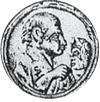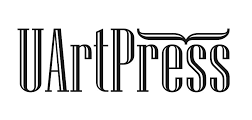Peer Review
Peer reviewing is a very important stage in publishing academic papers; it is the essence of the entire academic publishing system. The peer-review process has a crucial role in ensuring the scientific quality and impact of the journal, as it assesses the originality, scientific relevance and quality of the articles submitted for publication. During it, reviewers and editors can suggest improvements to the form and content of articles in progress.
Symbolon Journal uses the system of reviewing articles in a double-blind peer review system, with the identity of the author(s) of the article and of the reviewer(s) not being known by the parties. Only the editor designates the reviewer and knows the identity of the author(s) and the reviewer. In cases where the double-blind system is not possible, the simple-blind peer review system will be used, in which the reviewer knows the author's identity, but the author does not know that of the reviewer. The choice of reviewers aims to avoid conflicts of interest.
Peer reviewers for Symbolon are selected based on their academic expertise, research experience, and ethical integrity, in alignment with international peer review standards and the COPE Ethical guidelines for peer reviewers.
The journal’s scientific board, which also serves as the primary reviewer pool, is composed of members from diverse disciplinary backgrounds, institutions, and geographical regions, reflecting Symbolon’s commitment to international and interdisciplinary scholarship.
Reviewers are chosen according to the following criteria:
- Subject expertise: Demonstrated competence in the manuscript's thematic area, with relevant academic publications or practice-based research.
- Academic qualifications: Holding a doctoral degree or equivalent research credentials in the discipline.
- Independence and impartiality: No recent collaboration, institutional affiliation, or personal relationship with the author(s).
- Experience in peer review: Prior experience in scholarly reviewing or demonstrated understanding of review standards.
- Ethical conduct: Commitment to confidentiality, objectivity, and transparency throughout the peer review process.
Where necessary, external reviewers (i.e., not affiliated with the editorial board or the publishing institution) may be invited to ensure diversity of opinion or specialized assessment.
Reviewers in performance, media, and music studies are encouraged to consider the specificities of practice-based research, the interpretive use of theory, and the role of non-textual media. Submissions may involve artistic documentation or multimodal formats that require context-sensitive evaluation. Reviewers assess originality, research depth, clarity of methodology, and the relevance of creative practice to the scholarly argument.
The review process
The stages of the review process are as follows:
- Receiving items. The editor-in-chief or associate editor-in-chief receives the articles from the authors by e-mail and distributes them to the editors.
- Evaluation of editors. The editors make a first assessment of them, taking into account the observance of the journal's purpose, objectives and topics, as well as the conditions of publication described in the section Instructions for Authors. If the article does not comply with them, it will be rejected, and the author will be notified of the reasons for this rejection.
- Evaluation of reviewers. If the editors accept the proposed articles, they will remove the identification elements of the authors and send them to the reviewers. An article can be sent to two or more reviewers. The reviewers are selected so that their specialization and experience correspond to the topic proposed by the author. If necessary, the editor may request additional opinions from invited reviewers external to the journal's scientific staff, provided they meet the same conditions for specialization and experience. The choice of peer reviewers will aim to avoid conflicts of interest.
Reviewers evaluate the paper according to the criteria and fill in the review form. The reviewer submits to the editor the review form, the conclusion of which contains one of the following recommendations:
a. Acceptance without revision
b. Acceptance with revision (minor or major)
c. Rejection - Acceptance or rejection of the proposed article. After reading the reviewers' reports, the editor sends the author one of the following decisions:
a. Acceptance without revision. In this case, the article will be scheduled for publication in one of the following journal issues.:
b1. Acceptance with minor revision. In this case, the comments made by the reviewer are sent to the author, who is asked to resolve them within a given time limit.:
b2. Acceptance with major revision. In this case, the comments made by the reviewer are sent to the author, asking him to resolve them within a given time. Afterwards, the corrected version is sent back to peer reviewers, who may decide to accept the manuscript for publication. If the second revision does not lead to a variant that satisfies the requirements of the peer reviewers, the editor-in-chief may decide not to publish the manuscript.
c. Rejection, with the notification of the author regarding its reasons. Rejected articles cannot be submitted in the future, even if the authors have reworded them.
The author is informed that the editorial team will not make any changes in the article's content without the author's consent. If the author does not wish to comply with one or more of the recommendations of the peer reviewers, the editor-in-chief decides whether to publish or not to publish the manuscript. The final decision on accepting or rejecting a paper for publication rests with the editor-in-chief. In case of finding some forms of plagiarism, fabrication of data, etc., as well as some significant writing or content errors, the editor-in-chief may decide ab initio, to reject the publication of the manuscript.




